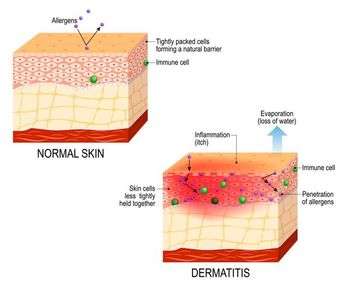
Aspergillosis
A 35-year-old HIV-positive man had a thick, black, otherwise asymptomatic patch on the top of his tongue. He did not have diabetes.
A 35-year-old HIV-positive man had a thick, black, otherwise asymptomatic patch on the top of his tongue. He did not have diabetes. Culture of the lesion grew aspergilli. The ubiquitous Aspergillus fungi produce disease in several ways, the most serious of which is hematogenous dissemination in immunocompromised persons. The infection is usually acquired when the person inhales airborne spores that can then invade any part of the body. The mold colonizes as a black eschar and causes infarction, necrosis, and hemorrhage.
The differential diagnosis of aspergillosis includes mucormycosis and Kaposi's sarcoma (KS). Mucormycosis is also caused by ubiquitous fungi, usually invades via the respiratory tract, and may appear as a black eschar on the palate of persons who are immunocompromised or who have diabetes. The infection causes tissue necrosis, and a black nasal discharge is usually a sign of deep infection. Mucormycosis is less likely to involve the tongue than aspergillosis, but only biopsy or culture can distinguish definitively between the two.
Cutaneous KS in patients with AIDS is usually asymptomatic and begins as a red, pink, tan, or violaceous ecchymotic macule. The lesions may progress to become papules, plaques, nodules, and tumors that ulcerate and bleed easily. Almost all KSs are palpable and firm.
Newsletter
Enhance your clinical practice with the Patient Care newsletter, offering the latest evidence-based guidelines, diagnostic insights, and treatment strategies for primary care physicians.



























































































































































































































































































